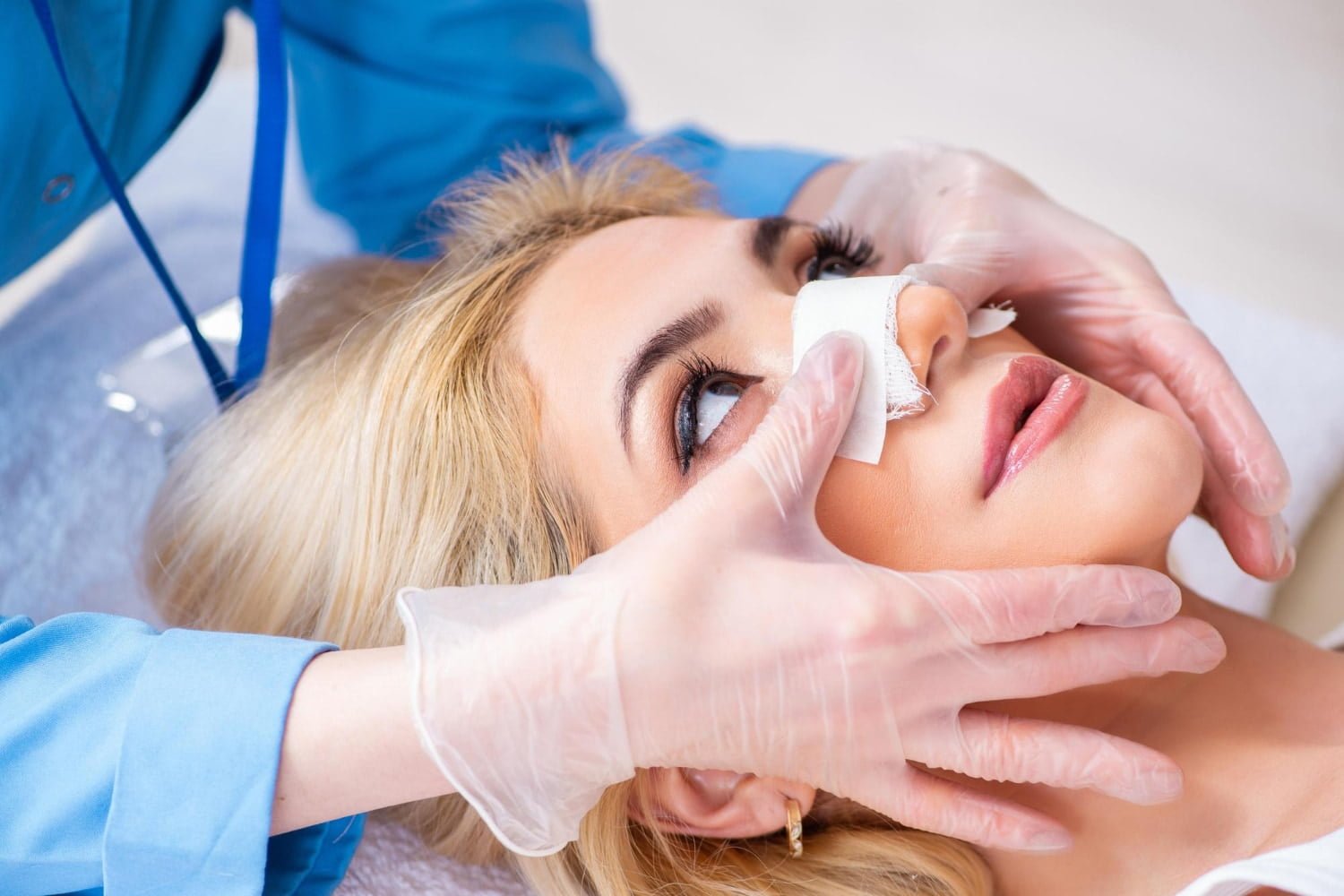Rhinoplasty or Nasal Aesthetics is a surgical procedure performed to change the shape, size, and appearance of the nose. This procedure is done to correct defects in the nasal structure, solve breathing problems, or change the shape of the nose for aesthetic reasons. Rhinoplasty can be a treatment option for anyone who is dissatisfied with the shape or size of their nose. Aesthetic nose surgery is performed by a specialist surgeon in this field and is generally done under general anesthesia. The operation is performed through an incision made inside the nose or under the nostrils, so that visible scars are minimized. The rhinoplasty procedure may include correction of the shape, size, and symmetry of the nose, reducing or enlarging the nasal tip or nostrils, correcting nasal deviation, or removing a bump on the nasal bridge. The surgery may also involve correcting the nasal septum to help resolve breathing problems.
Nose surgery is usually performed for aesthetic purposes, but people with breathing problems due to nasal defects or congenital abnormalities can also undergo nose surgery. Breathing problems can be caused by deformities in the bones or cartilage inside the nose or by blockages inside the nose.

Rhinoplasty surgery is performed on individuals who want to correct flaws in their nose structure, solve functional problems that cause breathing difficulties, or change the shape of their nose for aesthetic reasons. The nose surgery is performed under general anesthesia and takes approximately 2-3 hours. During the surgery, the surgeon makes small incisions inside the nose or under the nostrils to change the shape and position of the nose bones and cartilage. The skin is then lifted to reshape the nose structure and finally, the skin is put back in place and closed with stitches. Aesthetic nose surgery can be performed using two different techniques:
Closed technique: A technique that is performed through small incisions made inside the nostrils. In this technique, the surgeon accesses the nose bones and cartilage and makes the necessary corrections to change the nose shape.
Open technique: In this technique, a small incision is made under the skin on the nose, exposing the nose structure. This technique is used to correct more complex problems in the nose.
After rhinoplasty surgery, the nose is fixed with a bandage or splint. This bandage or splint is used to reduce swelling in the nose and speed up the healing process. Individuals can generally return to their normal daily activities within a few days after the surgery. However, the full recovery process may vary depending on the person’s health and the procedure performed.
Our Doctors are members of the International Society of Hair Restoration Surgery (ISHRS). They have 15 years of surgical experience.
Our hospital is rated A+ by the Turkish Ministry of Health and accredited by JCI, representing gold standards in hygiene and quality.
Mednav always strives to provide the best services at affordable prices; Mednav provides all-inclusive packages from operation to hotels and transportation at the best prices.
After rhinoplasty, the process of adjusting to the new shape of the nose begins. Following the procedure, most people may experience mild pain, swelling, and bruising. After the surgery, individuals should pay attention to the following points:
Rhinoplasty bandage or splint: After the surgery, a rhinoplasty bandage or splint is applied. This is used to reduce swelling, decrease the risk of bleeding, and speed up the healing process. The bandage or splint will be removed according to the surgeon’s instructions.
Painkillers: After the surgery, painkillers recommended by the surgeon should be taken regularly to relieve pain.
Cold compresses: Cold compresses are applied to reduce nose swelling and bruising. Compresses can be made using ice packs or cold towels, but care should be taken not to apply too much pressure on the nose.
Sleeping position: After the surgery, it is recommended that individuals sleep with their head slightly elevated. This helps to reduce swelling and bleeding.
Activity: After the surgery, individuals should follow the recommended activity level by the doctor. Resting and lying down are important during the first few days. It is necessary to avoid heavy exercise and lifting weights.
The rhinoplasty recovery period after surgery may vary depending on the individual’s health condition, the type of surgery, and personal factors. Returning to normal activities can take a few weeks or longer once the swelling and bruising have completely subsided. After the surgery, it is important to follow the surgeon’s recommendations.
Rhinoplasty prices can vary depending on the surgeon’s experience, the location of the procedure, the technique used during surgery, the length of hospital stay, and the patient’s needs. Rhinoplasty surgeries can be performed using several different techniques, each with different costs. These include differences such as closed or open techniques, and whether or not implants are used. Additionally, the location where the surgery is performed can affect the price. For example, surgeries performed in a private clinic or aesthetic surgery center may be more expensive due to higher overhead costs. To obtain more detailed information on rhinoplasty prices for 2023 changes, you can contact us.
Rhinoplasty prices vary depending on the hospital, the doctor, and the patient's needs.
Rhinoplasty is not recommended for individuals with health issues that could hinder the operation.
Rhinoplasty is not a painful surgery. There may be some mild discomfort after the surgery, but it will gradually subside over time.
In aesthetic rhinoplasty procedures, there is an age limit of 18, but rhinoplasty procedures performed for functional reasons can be done at younger ages.
Packages include medical fees, accommodation, airport transfers, and personal host.




2024 © Mednav Health Travel. All Rights Reserved.